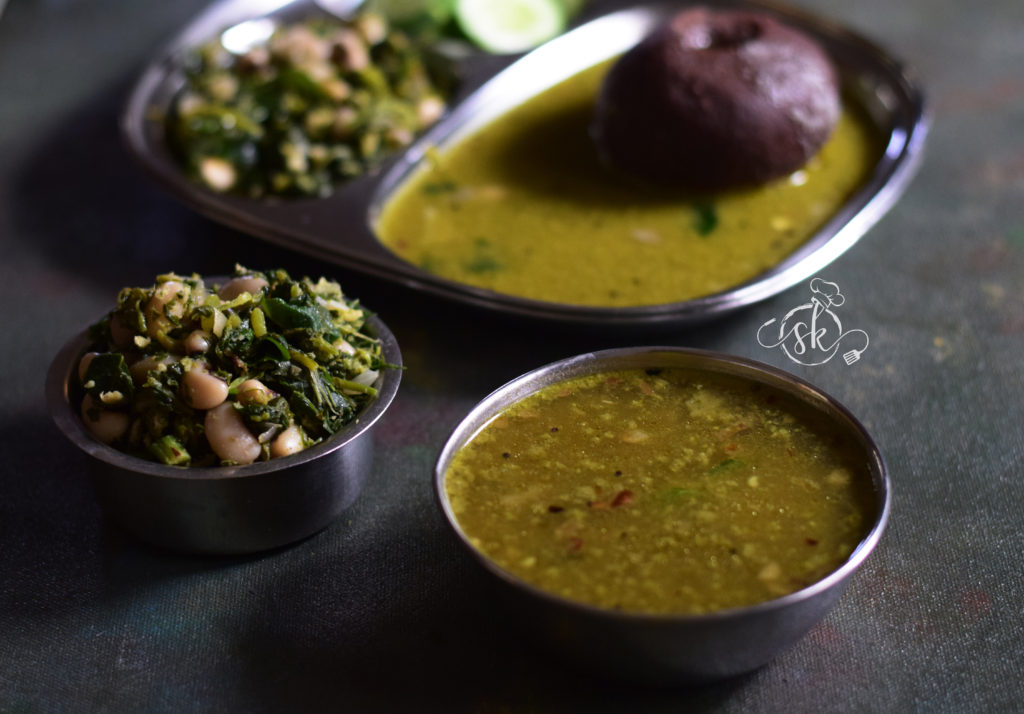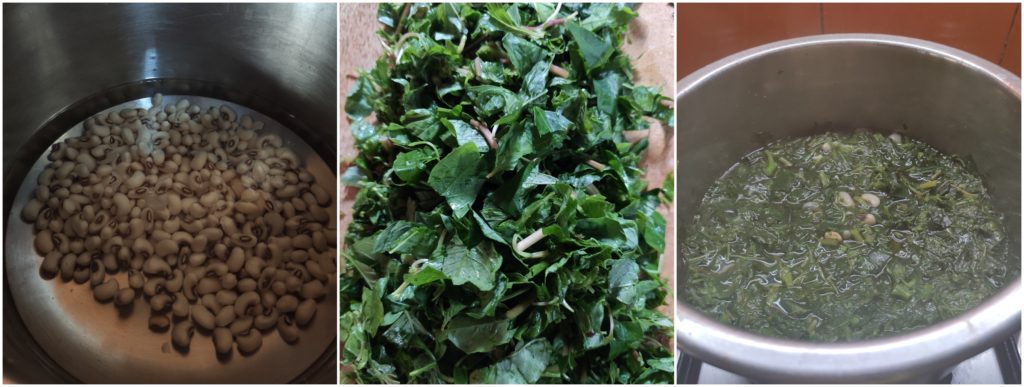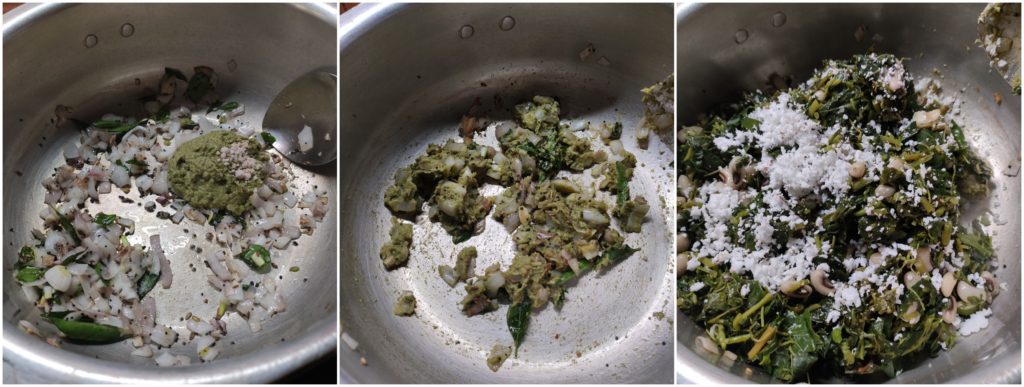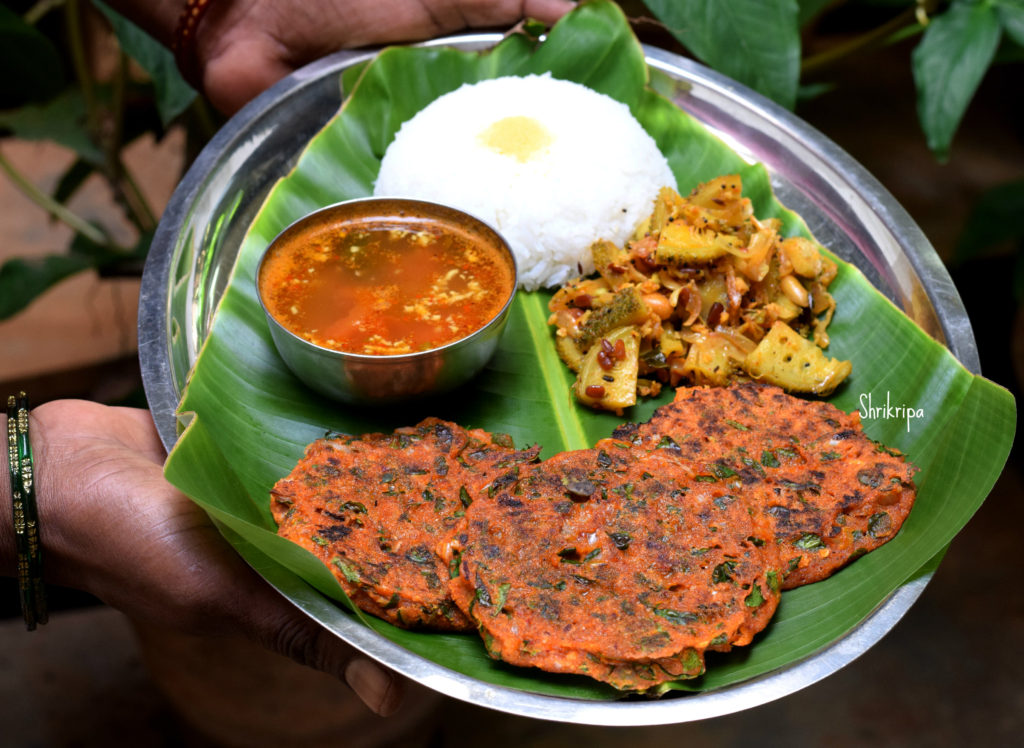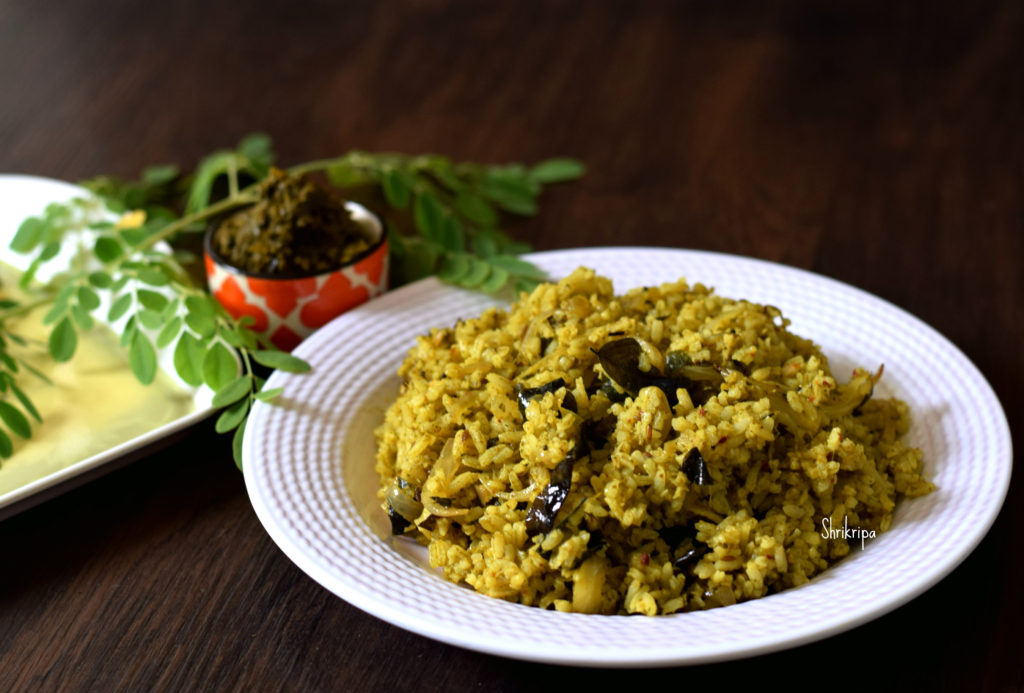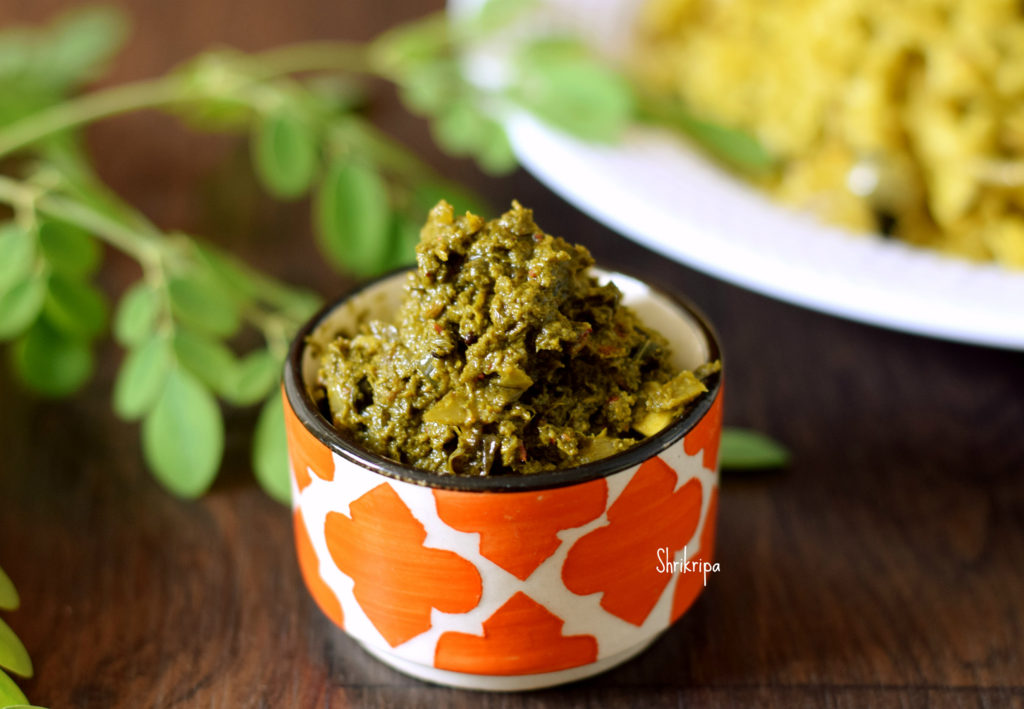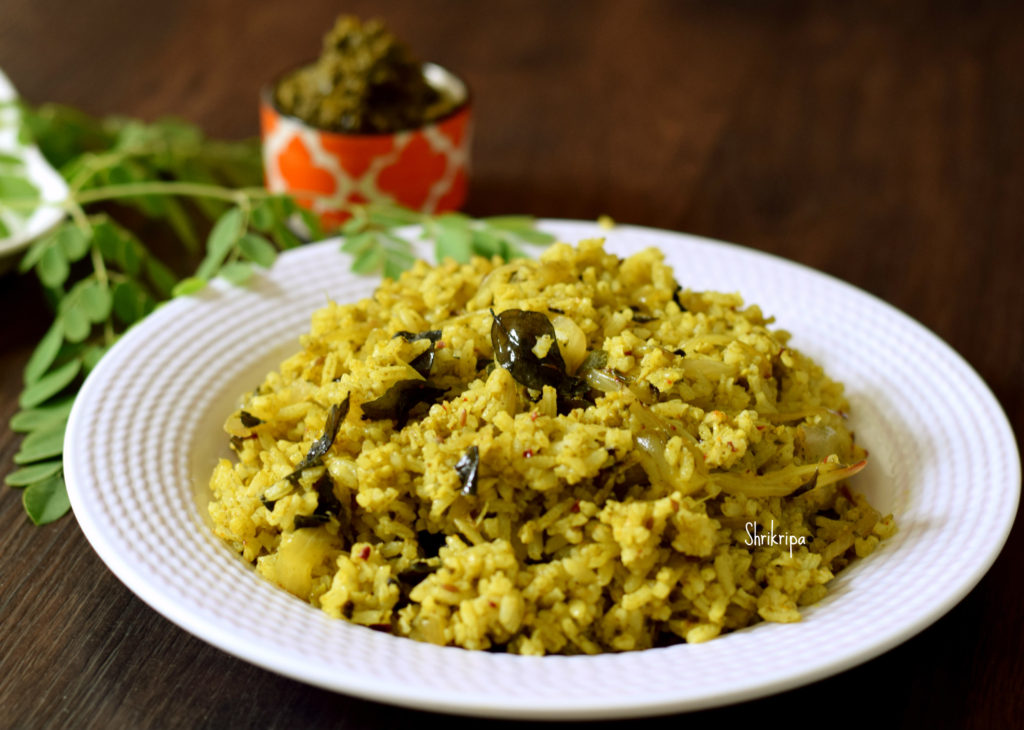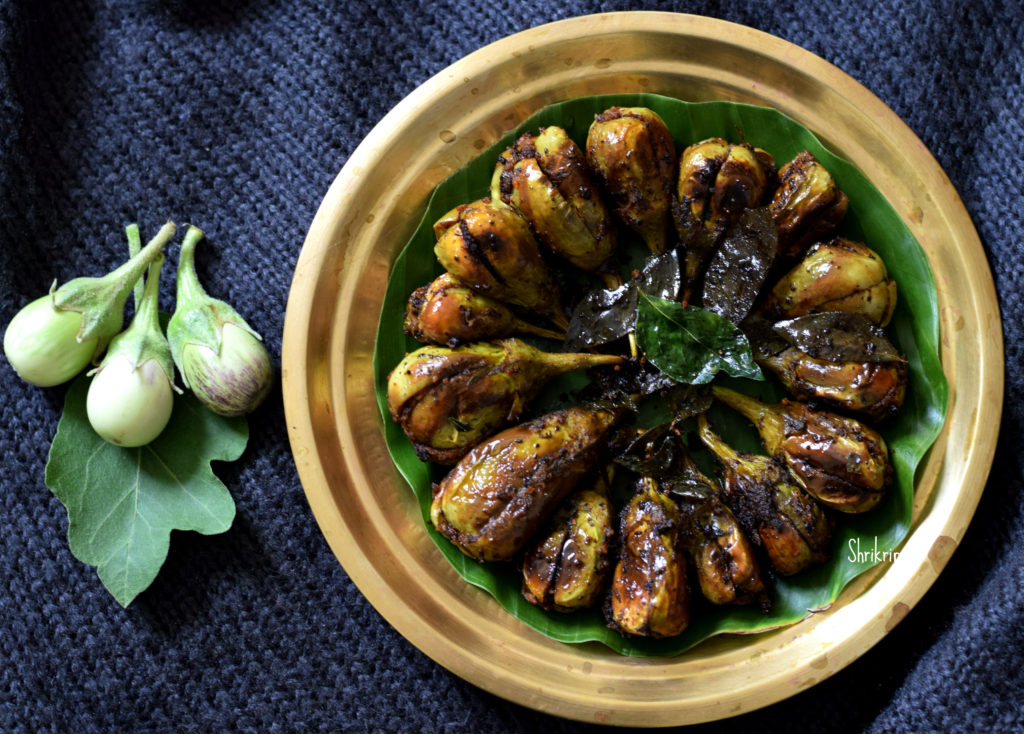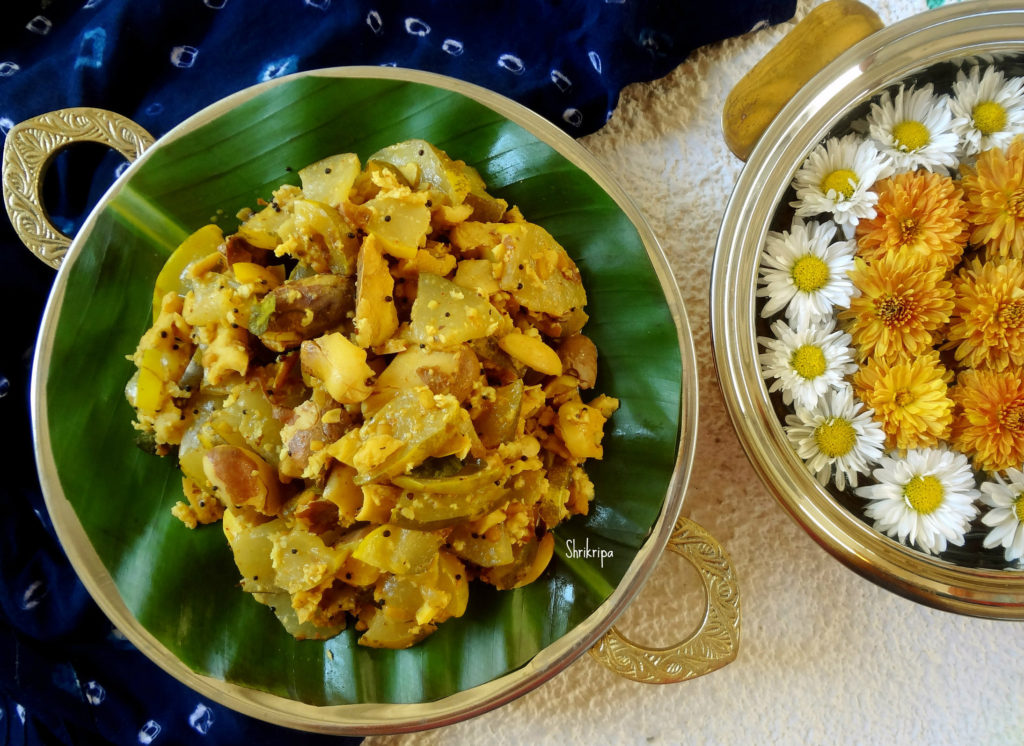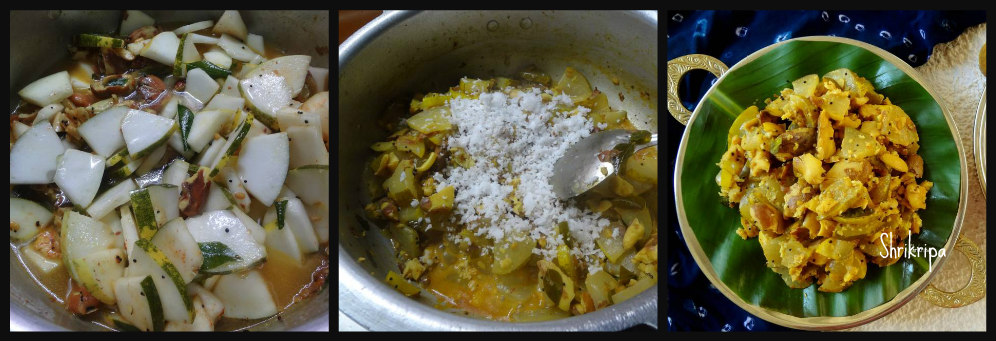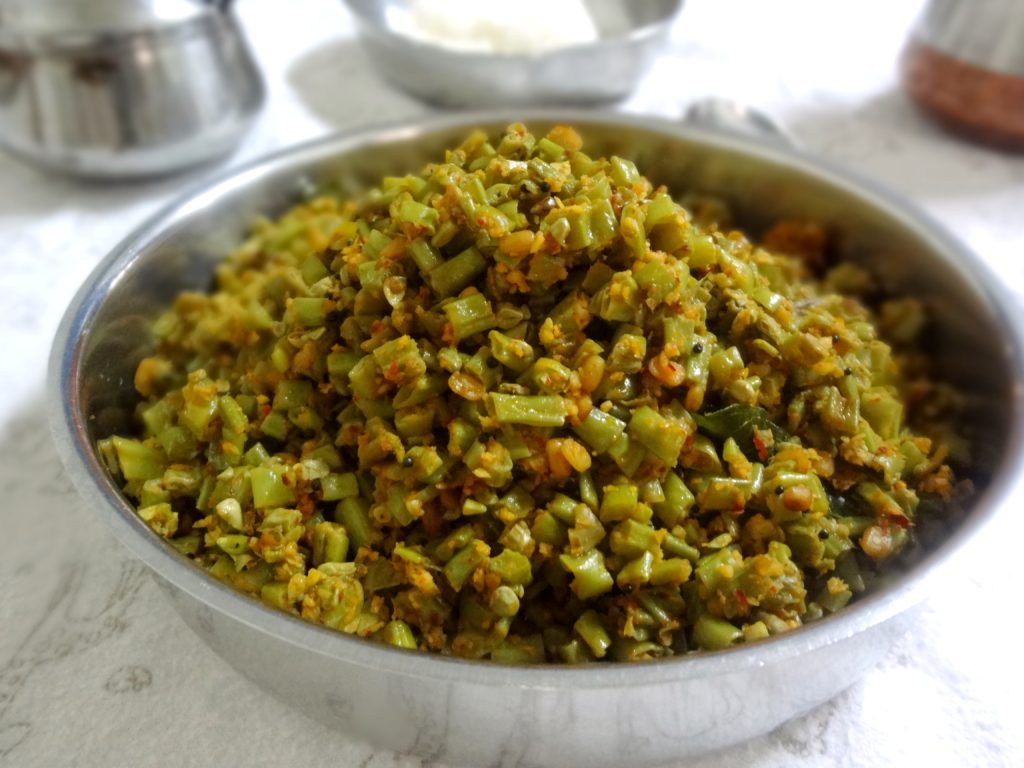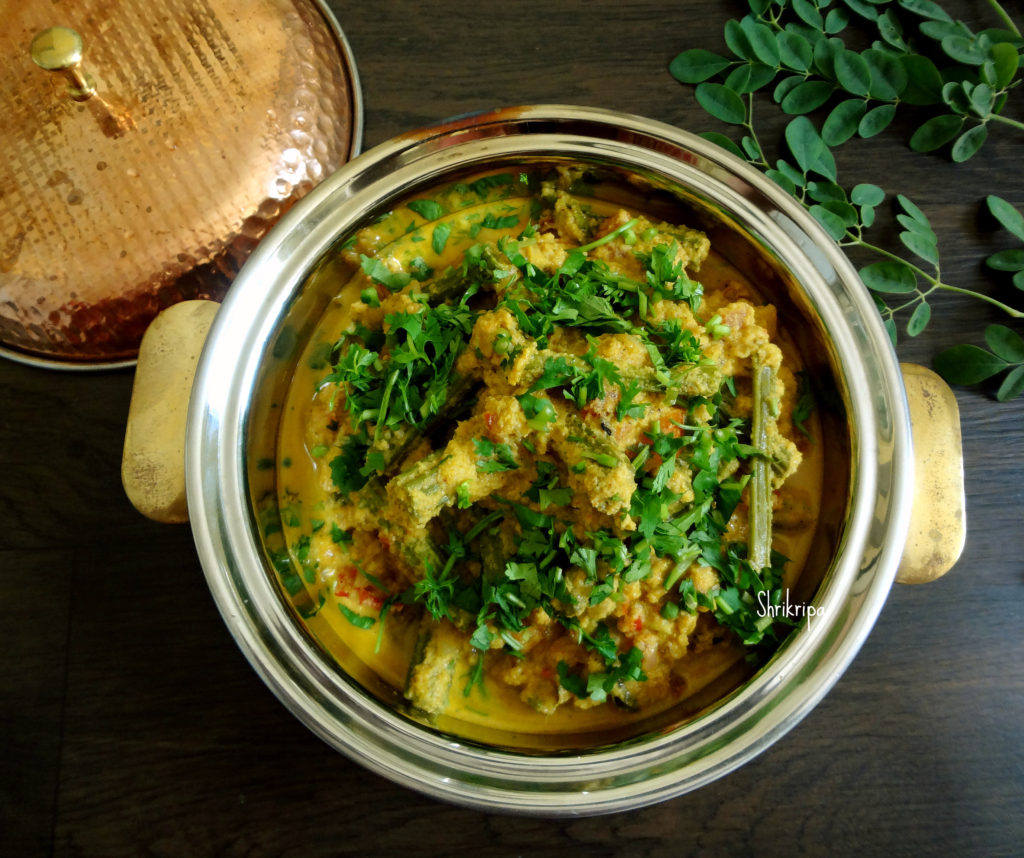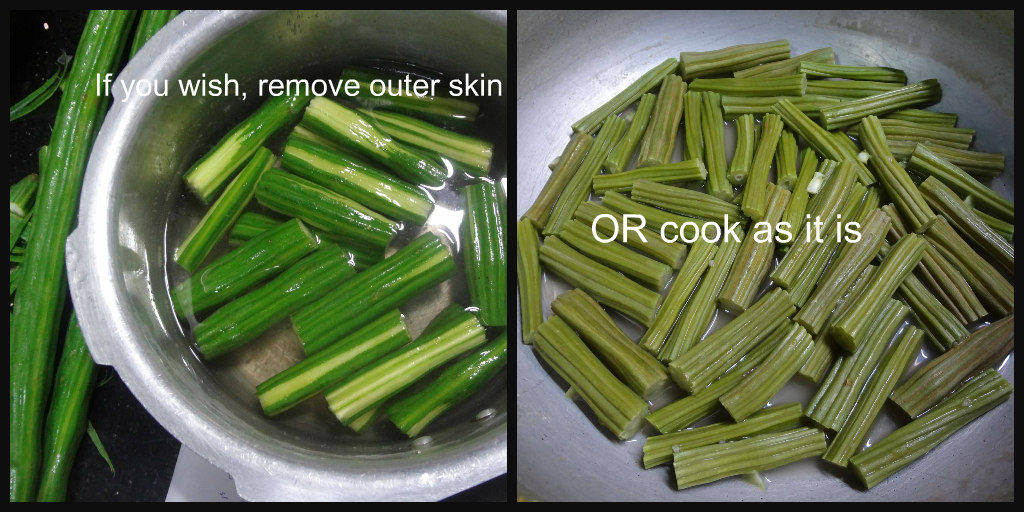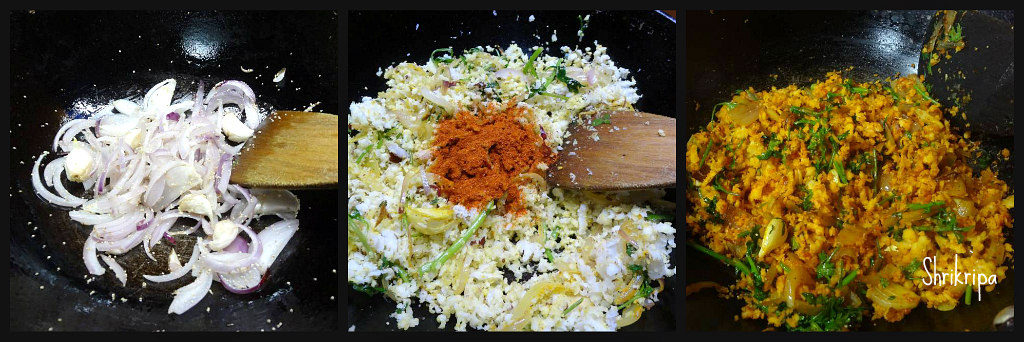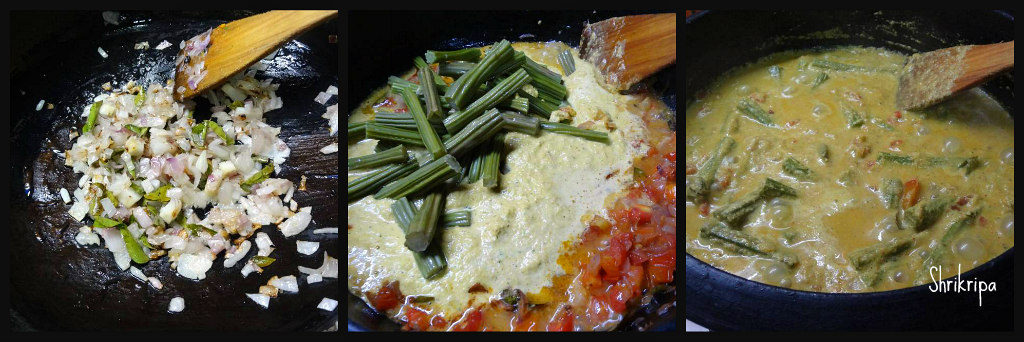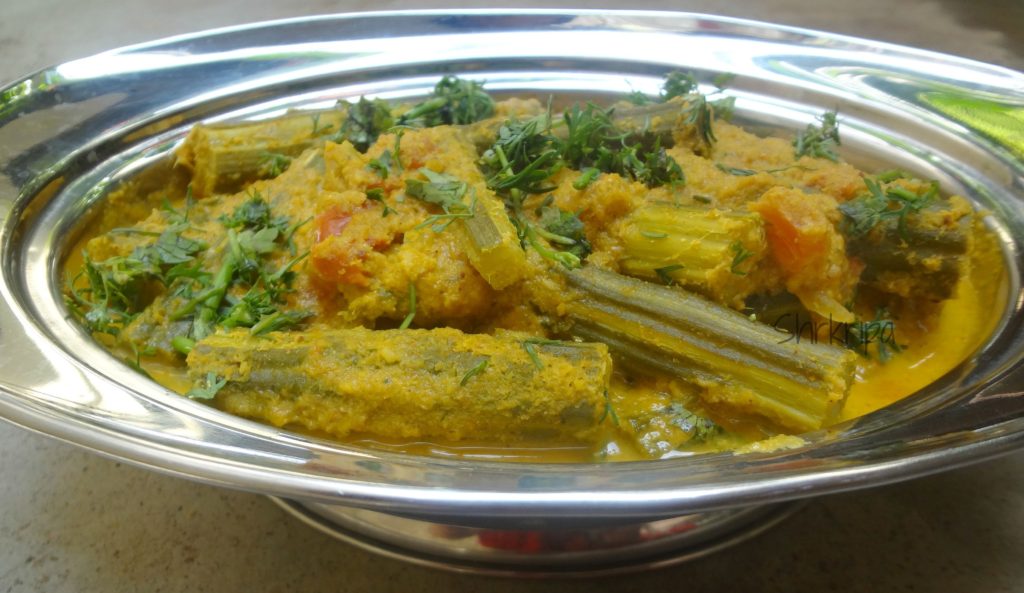Usually, Brinjal/ Eggplant of Mangalore/Udupi region is known as “UDUPI GULLA”. No! We have two varieties.
Both are Heirloom, native variety.
How to differentiate our native varieties of brinjal? It is so easy.
Here, I am talking about our “Oora Badane”, “Native Brinjal” of Mangalore.
Much bigger (almost like purple brinjal, used in Bhartha). The outer skin is shiny pear-shaped; the outer skin is thinner, pale green with white lines.
It is fleshy and used in our style of Bhartha ( Roasted sweet and sour Gojju), Palya, Sambar and kayi Huli.
We all know that GI tagged “Udupi Gulla”, which is small, darker in the shade, matte-finished outer skin with a couple of thorns at the woody stalk. ( which is at the backside in the picture)
For this palya, we use fleshy, seasonal native brinjal. This one side dish, which my husband craves for and asks to make, and he relishes with Ghee smeared Chapathi.
The recipe is simple and needs freshly ground masala or readily available Rasam powder.

Ingredients:
Round Brinjal – 1
Onion – 2 ( medium)
Green chillies – 2
Salt
Tamarind – gooseberry size
Turmeric – ½ tsp
Jaggery – as needed
For the masala powder:
¼ cup – grated coconut
2 -Red chillies
Coriander -1 tsp
Cumin – ½ tsp
For the seasoning:
Coconut oil – 2 tbl spoons, mustard – 1tsp, urad dal – 1tsp, Chana dal – 1tsp, hing – 1 pinch and curry leaves – 1 spring
Chopped coriander – to garnish.
Method:
-Slice onion. Chop green chillies. Soak the tamarind in a small cup of hot water.

-Roast the coriander, cumin, red chillies in a drop of oil, make a coarse powder and keep it aside.
-Now take a bowl with water and immerse the chopped brinjal. Brinjal pieces should be slightly bigger and ¼” thicker. (Please refer to the pictures)
-Now, we would do the seasoning, take one Kadai, heat oil, splutter mustard, add urad dal, chana dal, hing and fry until it is slightly brown. Add curry leaves.
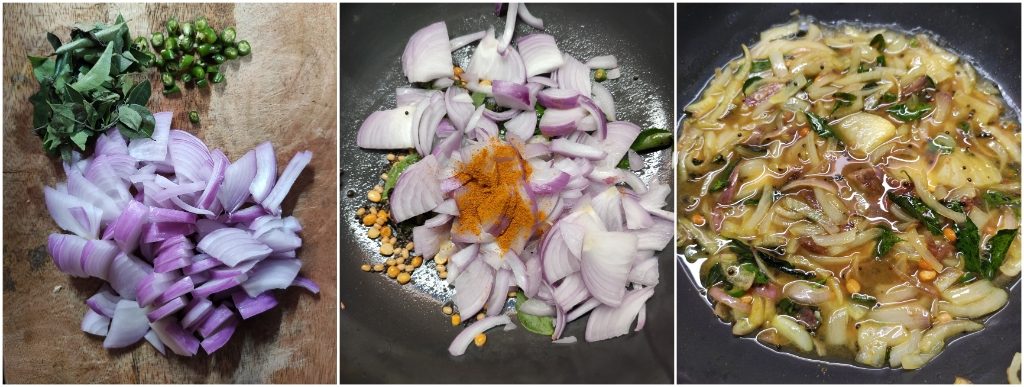
-next, add onion and green chillies and fry until it is transparent and wilts.
-Extract tamarind water pour-over. Add turmeric, salt, jaggery. When water starts boiling, add brinjal and mix everything properly.
-Close the lid and cook the veggie on a low flame. Add freshly dry ground coconut masala, mix everything, once again close the lid and cook further to absorb the flavour.
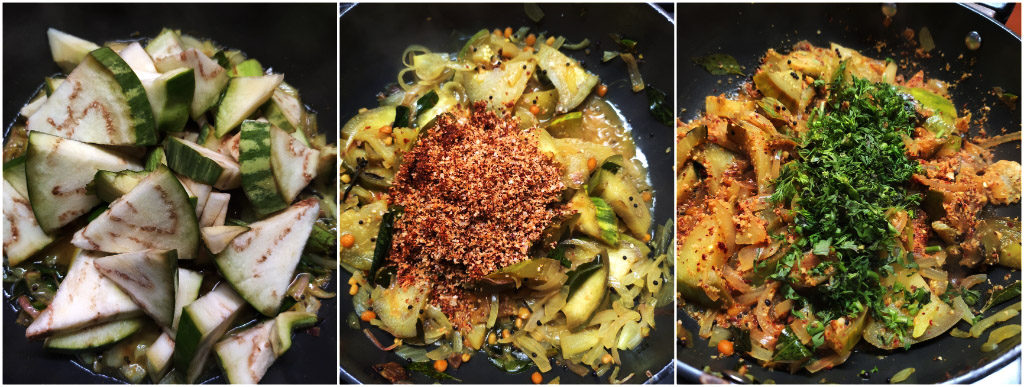
-Switch off the gas and garnish with the chopped coriander leaves. It pairs well with Roti or rice.
NOTE:
If you are using the rasam powder, add little coconut and proceed with the procedure with the Rasam powder.
-Freshly made masala and the usage of cold-pressed coconut oil does give the authentic taste.

